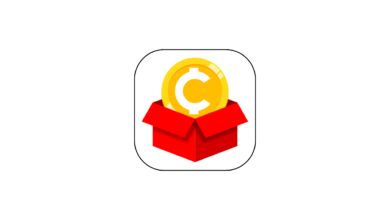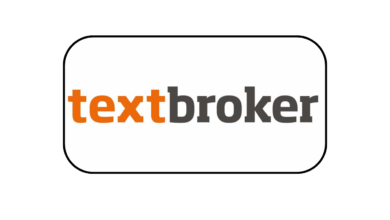Make money online
SaaS | How to Make Money With SaaS Businesses

The Software as a Service (SaaS) model is a major deal in today's world of digital. It allows companies to offer cloud-based software services. This article will help you understand how you can create the SaaS company profitable. The SaaS market is expanding rapidly. It's because more and more customers are looking for cloud-based software that is flexible and cost-effective. Understanding the way SaaS operates will allow your company to succeed and earn money over time. Understanding the performance of your business and market performance is crucial. This information will help you make the right decisions and help you improve your product. With a sound plan to follow, you can help your SaaS company grow and become profitable.
Key Takeaways
- Know the basic principles that underlie understanding the fundamentals of SaaS company model which includes the concept of recurring revenue as well as subscription-based pricing.
- Examine key performance and metrics indicators to make informed decisions and improve your SaaS services.
- Conduct a thorough market study to determine the target market and then position your SaaS product to achieve its goals.
- Create a compelling strategy for your product that is able to meet the needs of customers and provides a solid market fit for the product.
- Develop efficient pricing strategies as well as Customer acquisition channels to ensure sustainable revenue growth.
- Make use of scaling techniques to boost the size of your Revenue stream and boost the profit.
- Keep abreast of the latest market trends and continually create new ideas to maintain your edge in the market.
Understanding the SaaS Business Model Fundamentals
It is the SaaS (Software as a service) model is the most popular in the technological sector. It is a stable and predictable income that draws investors and entrepreneurs. This is a model that revolves around subscription-based services.Recurring Revenue and Subscription Models
The mainstay principle of SaaS model is the recurring revenue. Customers pay a fixed amount that is either monthly or annual for the use of the software. This allows companies to forecast their earnings. This method also helps build a solid customer base. Customers remain loyal because they're involved in the services and their regular updates.Key Metrics and Performance Indicators
- Monthly Recurring Income (MRR) is a crucial measure of the total revenue recurring from customers. It is a way to assess the SaaS business's growth and health.
- Churn Rate: reveals how many customers cancel or do not keep their current subscriptions. It emphasizes the importance of keeping clients happy.
- The Customer Lifetime Value (CLV) estimates the total amount a customer will generate over time. It is used to guide marketing and acquisition strategies.
Market Analysis and Positioning
To be successful to be successful in this SaaS market, companies must study the market and establish themselves in a favorable way. They must know the needs of customers, be aware of their competition and be different. By aligning their SaaS model to market demands firms can get an advantage in competition and increase their share of the subscription market.| Metric | Description | Importance |
|---|---|---|
| Monthly Recurring Revenue (MRR) | The total recurring revenue generated by customers on an annual basis | Offers an overview of the general state of health and expansion in the SaaS business |
| Churn Rate | The amount at which customers can cancel or do not renew their subscriptions | The need to optimize strategies to retain customers. |
| Customer Lifetime Value (CLV) | Estimates the total amount of revenue the customer will earn throughout its relationship with SaaS company | Informs marketing and acquisition efforts |
How to Make Money With SaaS Businesses
Being successful in running a SaaS company requires finding the best ways to earn money. There are options like freemium models tiered pricing and usage-based pricing are all available. These can help to create various Revenue streams for SaaS and boost the business's profitability. Freemium is a hit. It has a basic model free of charge and charges additional features. This helps to attract new customers and then upsell them to more expensive tiers. Tiered pricing is a different option. It provides different levels of service for different prices. This is able to meet the needs and budgets of a variety of customers, increasing the monetization of SaaS strategies. Utilization-based billing can also be effective. Customers are charged for what they consume. This method is ideal for businesses that have evolving usage patterns, and aligns costs and value. SaaS companies can also provide an array of add-on services. These can include professional consultancy or custom integrations or data analytics. These are valuable and can help boost the profitability of SaaS businesses.. With a variety options SaaS business models for revenue, SaaS companies can increase their revenue and be profitable. They are able to adjust to the changing needs of customers and stay ahead of the changing market.Building a Successful SaaS Product Strategy
Making a successful SaaS plan for your product is essential to growth and success. It's about finding the best market-to-product suit as well as setting sensible prices and utilizing the most effective ways to reach customers.Product-Market Fit Optimization
Finding market-to-product match is an important factor in SaaS success. You must be aware of your customers and be able to solve their issues. So, you can provide high-quality services and keep customers returning. The ability to listen to feedback, improving your product and tweaking the features are crucial. These help you to satisfy the needs of your customers better.Pricing Strategy and Tiers
A well-planned pricing strategy is essential to earning money. Offering different pricing levels for different budgets will allow you to get more customers. This allows you to reach a larger market. analyzing information about your customers, trends in industry and benchmarks for market performance helps to determine the best price. This helps keep your SaaS business competitive and profitable.Customer Acquisition Channels
Finding new customers is an essential aspect of the success of a SaaS strategy. Utilizing multiple channels, such as SEO, content marketing, partnerships, and social media can help you attract leads of high quality. Making sure you test and improve your marketing strategies is crucial to increasing your customer base. Understanding these essential aspects of SaaS strategy creates a solid base for the success of your service. It helps ensure that your SaaS remains current, profitable, and focuses on the customer.Scaling Your SaaS Revenue Stream
Growing your SaaS business is essential for long-term growth and profits. To increase your revenue consider these strategies for growth in your SaaS business:Upselling and Cross-selling
Increase your customers' value by giving them more. Seek opportunities to sell them exclusive features or similar products. Make use of their experience and feedback to develop attractive cross-sell and upsell offers.Expanding into New Markets
Explore new geographical markets or service more customer groups. Conduct thorough research to identify new opportunities. And then, modify your products or pricing to meet the requirements of these new customers.Leveraging Partnerships
Establish strategic alliances with businesses which are compatible with yours. This will help you gain more customers. Partner with your marketing team or split the revenue to increase your SaaS revenue rapidly.Automation and Efficiency
Utilize automation and streamline processes to expand while remaining profitable. Utilize tools to automate your tasks and improve customer service and make your business more efficient.| SaaS Growth Strategies | Impact on Revenue | Operational Considerations |
|---|---|---|
| Upselling and Cross-selling | A higher value for customer life | Comprehensive analysis of customer data Personalized promotions |
| Expanding into New Markets | Untapped customer segments | Research-based market research, product/price modification |
| Leveraging Partnerships | Increased distribution and reach | With carefully planned partnerships, revenue-sharing models |
| Automation and Efficiency | Better efficiency and scalability | Integration of technology and process optimization |




